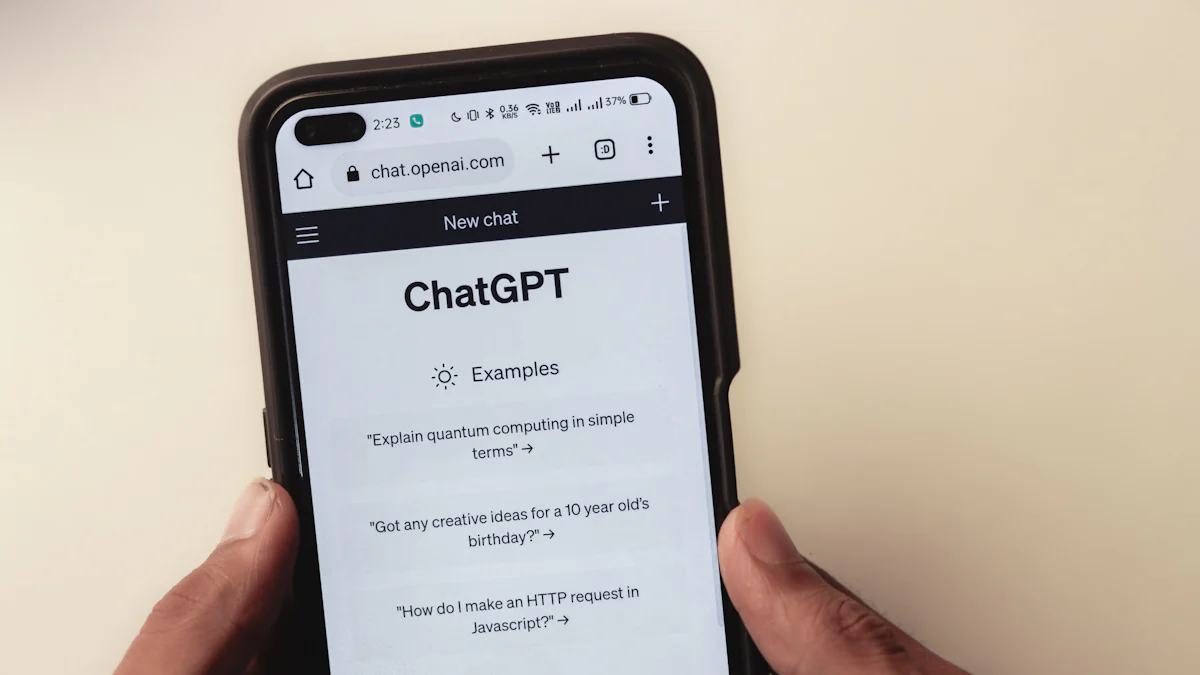Exploring the Benefits of Using ChatBot API for Building Bots

Unleashing the Power of ChatBot API
Chatbots have become an integral part of modern businesses, providing automated and interactive communication with users. To build these intelligent conversational agents, developers can leverage the power of a ChatBot API. A ChatBot API, short for Chatbot Application Programming Interface, is a set of rules and protocols that allows developers to interact with chatbot platforms and build bots more efficiently.
By using a ChatBot API, developers can unlock numerous advantages in the process of building bots. Firstly, it provides a standardized interface that simplifies bot development. Instead of starting from scratch, developers can utilize the pre-built functionalities offered by the API, saving time and effort. The ChatBot API acts as a bridge between the developer's code and the chatbot platform, enabling seamless integration and smooth communication.
Another significant benefit of using a ChatBot API is its ability to enhance bot intelligence. With advanced natural language processing (NLP) capabilities, the API enables chatbots to understand user queries better and provide accurate responses. By leveraging machine learning algorithms, developers can train their bots to continuously improve their understanding and conversational abilities.
Furthermore, a ChatBot API empowers developers to create highly customizable bots tailored to specific business requirements. It offers various features such as message routing, context management, and intent recognition that enable developers to design personalized conversational flows. This level of customization ensures that the bot aligns with the brand's voice and delivers a unique user experience.
In summary, utilizing a ChatBot API for bot development brings several advantages such as streamlined development process, enhanced intelligence through NLP capabilities, and customization options for personalized experiences. By leveraging this powerful toolset in building bots, developers can create efficient and engaging chatbot solutions that cater to their users' needs.
Understanding the Inner Workings of ChatBot API
What is a ChatBot API?
A ChatBot API, or Chatbot Application Programming Interface, is a set of protocols and tools that enable developers to interact with chatbot platforms and build bots more efficiently. It serves as a bridge between the developer's code and the chatbot platform, allowing seamless integration and communication.
The purpose of a ChatBot API is to provide developers with pre-built functionalities and resources that simplify the bot development process. Instead of starting from scratch, developers can leverage the API's capabilities to handle common tasks such as natural language processing (NLP), message routing, context management, and intent recognition. This not only saves time but also ensures that developers can focus on building unique features specific to their bot.
Working Mechanism of ChatBot API
To understand the working mechanism of a ChatBot API, it's essential to grasp its technical aspects. The API typically consists of a collection of endpoints or methods that developers can use to send requests and receive responses from the chatbot platform.
When integrating a ChatBot API into their development process, developers need to follow certain steps. First, they authenticate themselves with the chatbot platform using credentials provided by the API. Once authenticated, they can make requests to perform actions such as sending messages, retrieving user information, or managing conversation context.
Integration with bot platforms involves establishing secure connections through APIs like RESTful APIs or WebSocket protocols. These connections allow real-time communication between the bot application and the chatbot platform.
By leveraging a ChatBot API's working mechanism, developers gain access to powerful tools and resources that facilitate efficient bot development. They can take advantage of pre-built functionalities while customizing their bots according to specific business requirements.
Unlocking the Benefits: Why Use ChatBot API for Building Bots
Increased Efficiency and Productivity
One of the key advantages of using a ChatBot API for building bots is the increased efficiency and productivity it offers. The API provides developers with pre-built functionalities and resources that streamline the bot development process. Instead of starting from scratch, developers can leverage these features to save time and effort.
By utilizing a ChatBot API, developers can focus on building unique features specific to their bot, rather than spending time on common tasks such as natural language processing (NLP) or message routing. The API handles these tasks seamlessly, allowing developers to enhance their productivity by focusing on more critical aspects of bot development.
Furthermore, ChatBot APIs often come with comprehensive documentation and developer tools that facilitate faster development cycles. Developers can easily access resources like code samples, tutorials, and community support, enabling them to troubleshoot issues quickly and efficiently.
Enhanced Customer Experience
Another significant benefit of using a ChatBot API is the ability to deliver enhanced customer experiences. With the API's capabilities, developers can create personalized and interactive chatbot interactions that cater to individual user needs.
By leveraging a ChatBot API's advanced NLP capabilities, bots can understand user queries better and provide accurate responses. This enhances the overall customer experience by ensuring that users receive relevant information promptly.
Additionally, a ChatBot API enables developers to design conversational flows that engage users in meaningful interactions. By customizing the bot's responses based on user preferences or previous interactions, developers can create personalized experiences that make users feel valued.
Improving customer satisfaction and engagement is crucial for businesses across various industries. By integrating a ChatBot API into their bot development process, businesses can provide efficient and interactive customer support while freeing up human agents' time for more complex inquiries.
In summary, using a ChatBot API for building bots brings numerous benefits such as increased efficiency in development processes and enhanced customer experiences. By leveraging the API's capabilities, developers can streamline their workflows and create bots that deliver personalized and engaging interactions.
Real-World Success: Use Cases of ChatBot API
Customer Support and Assistance
One of the most prominent use cases of a ChatBot API is in the realm of customer support and assistance. By leveraging the capabilities of the API, businesses can automate their customer support processes, providing quick and efficient solutions to user queries.
Using a ChatBot API for automated customer support allows businesses to handle a large volume of inquiries simultaneously. The API can be integrated with various communication channels such as websites, messaging apps, or social media platforms, enabling customers to reach out for assistance conveniently.
Real-life examples of successful customer assistance bots powered by a ChatBot API include virtual assistants that provide instant answers to frequently asked questions, troubleshoot common issues, or guide users through self-service options. These bots are designed to understand user queries accurately and provide relevant information promptly.
E-commerce and Sales
Another significant application of a ChatBot API is in e-commerce and sales. By leveraging the capabilities of the API, businesses can create chatbot-powered experiences that drive sales and conversions.
A common use case is personalized product recommendations. By integrating a ChatBot API into an e-commerce platform, businesses can leverage user data such as browsing history, purchase behavior, or preferences to offer tailored product suggestions. This personalized approach enhances the shopping experience for users and increases the likelihood of making a purchase.
Furthermore, chatbots powered by a ChatBot API can assist users throughout their buying journey by answering product-related questions, providing detailed information about products or services, or even facilitating transactions directly within the chat interface. This seamless integration between chatbots and e-commerce platforms simplifies the purchasing process for customers and boosts overall sales.
In summary, the applications of a ChatBot API extend to various industries and use cases. From automating customer support processes to driving sales in e-commerce, businesses can leverage this powerful toolset to enhance their operations and deliver exceptional user experiences.
Key Features that Empower ChatBot API
Advanced AI Capabilities
One of the key features that empower a ChatBot API is its advanced AI capabilities. By utilizing machine learning and natural language processing (NLP) techniques, the API enhances the intelligence and conversational abilities of chatbots.
Machine learning algorithms enable chatbots to learn from user interactions and improve their understanding over time. With each conversation, the bot can analyze user inputs, identify patterns, and adapt its responses accordingly. This continuous learning process allows the bot to provide more accurate and relevant answers to user queries.
Additionally, NLP capabilities enable chatbots to understand and interpret human language more effectively. The API can process user inputs, extract meaning from unstructured text, and generate appropriate responses. This natural language understanding enhances the overall conversational experience by enabling more human-like interactions between users and chatbots.
Seamless Integration with Existing Systems
Another powerful feature of a ChatBot API is its ability to seamlessly integrate with existing systems such as customer relationship management (CRM) platforms, content management systems (CMS), or other business applications.
By integrating a ChatBot API with CRM systems, businesses can access customer data in real-time during conversations. This integration enables chatbots to provide personalized recommendations or retrieve relevant information about customers' previous interactions or purchase history.
Similarly, integrating a ChatBot API with CMS allows businesses to deliver dynamic content within chatbot conversations. The API can retrieve information from the CMS database and present it to users in a conversational manner. For example, an e-commerce chatbot can fetch product details or pricing information directly from the CMS backend.
Seamless integration with existing systems streamlines data exchange and information retrieval processes for chatbots. It eliminates the need for manual data entry or switching between different platforms, resulting in improved efficiency and accuracy in customer interactions.
In summary, the advanced AI capabilities and seamless integration features of a ChatBot API empower developers to create intelligent and efficient chatbot solutions. By leveraging these capabilities, businesses can enhance their customer interactions, provide personalized experiences, and streamline data exchange processes.
Tailoring Experiences: Customization and Personalization with ChatBot API
Customizing Bot Behavior and Responses
One of the key advantages of using a ChatBot API for building bots is the ability to customize bot behavior and responses to match specific business requirements. The API provides developers with the flexibility to adapt the chatbot's functionality, ensuring that it aligns with the brand's voice and meets the unique needs of the business.
By leveraging a ChatBot API, developers can define custom behaviors for their bots. They can program the bot to handle specific user inputs or trigger certain actions based on predefined rules. For example, a customer support bot can be customized to provide different responses depending on the nature of the inquiry or direct users to relevant resources.
Furthermore, developers can tailor bot responses based on user preferences. By integrating user profiling capabilities into their chatbot solution, developers can gather information about users' preferences, such as language preference or communication style. This allows them to deliver personalized responses that resonate with individual users.
Personalizing User Interactions
In addition to customizing bot behavior and responses, a ChatBot API enables developers to create personalized user interactions. By leveraging user data, such as past interactions or purchase history, developers can provide tailored experiences that meet individual user needs.
For example, an e-commerce chatbot powered by a ChatBot API can leverage user browsing history and purchase behavior to offer personalized product recommendations. By analyzing this data in real-time during conversations, the chatbot can suggest products that align with users' preferences and increase the likelihood of making a purchase.
Developers can also create user-centric conversational flows by considering each user's context and previous interactions. By maintaining conversation history and utilizing context management features provided by the ChatBot API, developers can ensure that subsequent interactions build upon previous ones seamlessly. This creates a more natural and engaging conversational experience for users.
In summary, using a ChatBot API allows developers to customize bot behavior and responses, as well as personalize user interactions. By tailoring the chatbot experience to match specific business requirements and individual user preferences, businesses can create more engaging and personalized interactions with their customers.
NewOaks AI Provides both webhook and API for integration
Webhook Integration
NewOaks AI offers both webhook and API integration options, providing developers with flexibility in integrating the ChatBot API into their applications.
Webhook integration involves setting up a webhook endpoint that receives HTTP requests from the chatbot platform. When a user interacts with the chatbot, the platform sends a request to the webhook endpoint, which triggers a specific action or response defined by the developer. This allows for real-time communication between the chatbot and external systems.
Integrating ChatBot API using webhooks offers several benefits. Firstly, it enables developers to extend the functionality of their bots by connecting them with external services or databases. For example, a chatbot integrated with a CRM system via a webhook can retrieve customer information or update records in real-time during conversations.
Additionally, webhooks provide asynchronous communication between systems. This means that while waiting for a response from an external service, the chatbot can continue processing other user inputs or performing other tasks. As a result, users experience faster response times and more seamless interactions.
API Integration
API integration is another method offered by NewOaks AI to integrate their ChatBot API into applications. It involves making direct requests to the API endpoints provided by NewOaks AI to perform actions such as sending messages or retrieving user information.
The process of integrating ChatBot API via API requires developers to authenticate themselves using credentials provided by NewOaks AI. Once authenticated, they can make requests to interact with the chatbot platform programmatically.
API integration offers several benefits and use cases. Developers have more control over how they interact with the ChatBot API and can build custom functionalities on top of it. They can leverage advanced features such as message routing, context management, or intent recognition provided by the API to create unique conversational experiences.
Furthermore, integrating via API allows for seamless data exchange and information retrieval between the chatbot and external systems. Developers can integrate the ChatBot API with CRM, CMS, or other business applications to retrieve or update data in real-time during conversations. This streamlines processes and ensures that the chatbot has access to up-to-date information.
In summary, NewOaks AI provides both webhook and API integration options for developers to integrate their ChatBot API into applications. Webhook integration offers real-time communication and asynchronous processing, while API integration provides more control and flexibility in building custom functionalities.
Embrace the Future with ChatBot API
In today's digital age, chatbots have become an integral part of businesses, providing efficient and personalized interactions with users. The power of ChatBot API has revolutionized the way developers build bots, unlocking a range of benefits and possibilities.
By harnessing the capabilities of ChatBot API, developers can streamline the bot development process, saving time and effort. The pre-built functionalities and resources offered by the API enable developers to focus on building unique features specific to their bot, enhancing efficiency and productivity.
Moreover, ChatBot API empowers businesses to deliver enhanced customer experiences. With advanced AI capabilities such as machine learning and natural language processing, chatbots can understand user queries better and provide accurate responses. This leads to improved customer satisfaction and engagement.
Real-world use cases demonstrate the effectiveness of ChatBot API in various industries. From automated customer support to personalized product recommendations in e-commerce, businesses can leverage the API's capabilities to drive success.
The key features of ChatBot API, such as customization and personalization options, empower developers to tailor bot behavior and responses according to specific business requirements. By leveraging user data, developers can create personalized conversational flows that enhance user interactions.
NewOaks AI provides both webhook and API integration options for seamless integration with external systems. Developers can choose the method that best suits their needs while ensuring smooth data exchange and information retrieval.
In conclusion, embracing the future with ChatBot API offers endless possibilities for efficient and personalized bot development. By leveraging its power, businesses can enhance customer interactions, improve productivity, and stay ahead in this rapidly evolving digital landscape.
See Also
A Comprehensive Guide to Leveraging ChatGPT and Twilio for Toll-Free SMS
Unlocking the Potential of Intercom's Fin AI Chatbot: Features, Comparison, and Integration Options
Optimizing the Utilization of a Free Receive SMS Online Tool: Tips and Techniques
A Comprehensive Walkthrough for Developing a Custom ChatGPT Chatbot for Business

